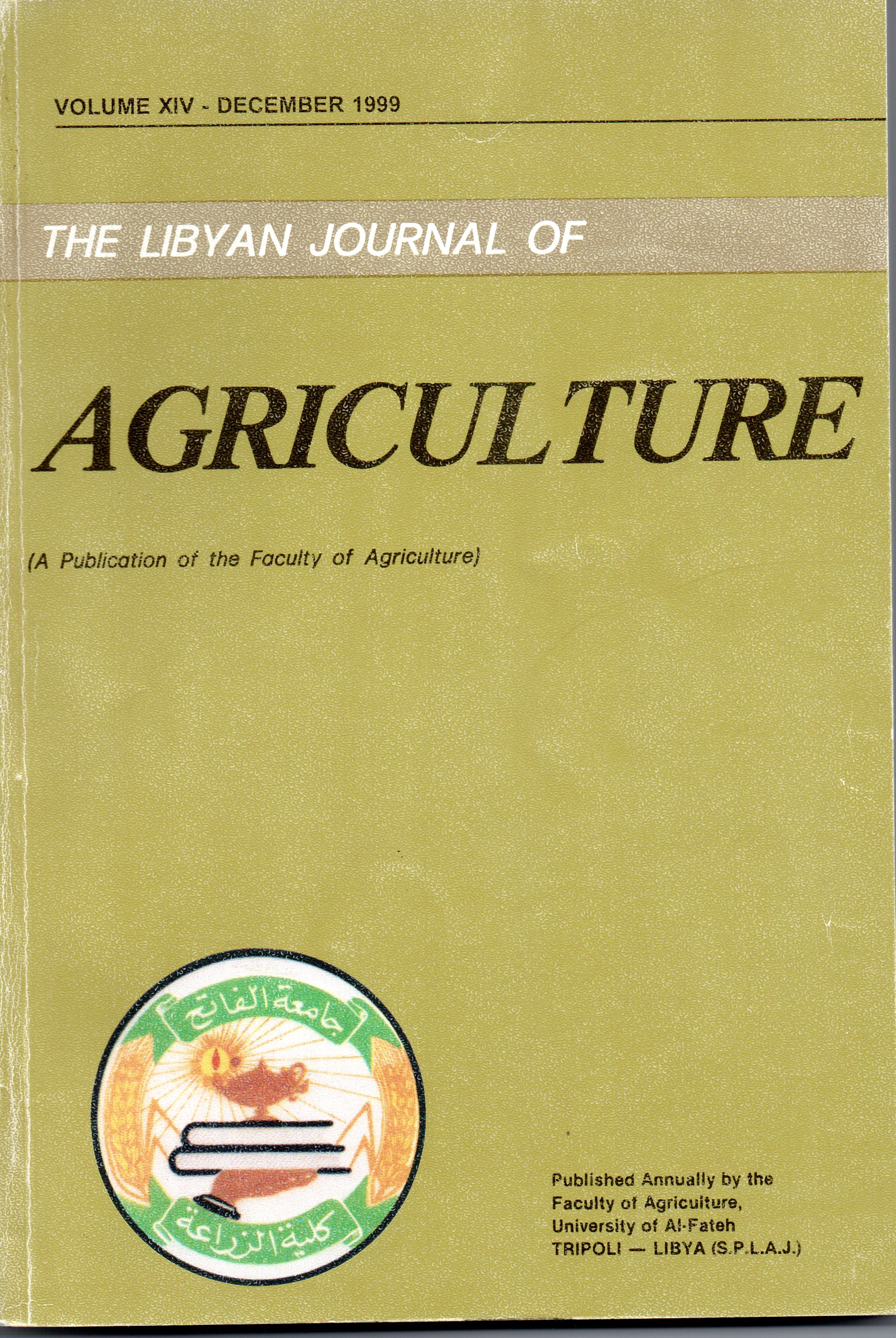Biotypes of Agrobacterium tumefaciens in the coastal region of Libya
Main Article Content
Abstract
he crown gall disease caused by Agrobacterium tumefaciens (Smith and Townsend) Conn, is commonly found in the coastal region of Libya on stone fruits, pome fruits, henna (Lawsonia inermis) and adhatoda (Adhatoda vasica). The pathogen was isolated from tumors and rhizosphere soil of infected peach, apple and adhatoda. Henna and rose isolates were recovered from the soil around galled plants. According to their physiological and biochemical characteristics, eleven isolates of A. tumefaciens were separated into two distinct groups: biotype 1 and biotype 2. Isolates LA-2, LA-8, and LA-11 belong to biotype 1, while LA-1, LA-3, LA-4, LA-5, LA-6, LA-7, LA-10, and LA-12 isolates are of biotype 2. As to their prevalence, biotype 2 was found to be more common. Two isolates (LA-1 and LA-10) out of eleven were sensitive to agrocin-84 when tested in vitro. Pathogenicity tests indicated that all isolates were tumorigcnic on carrot disks.

